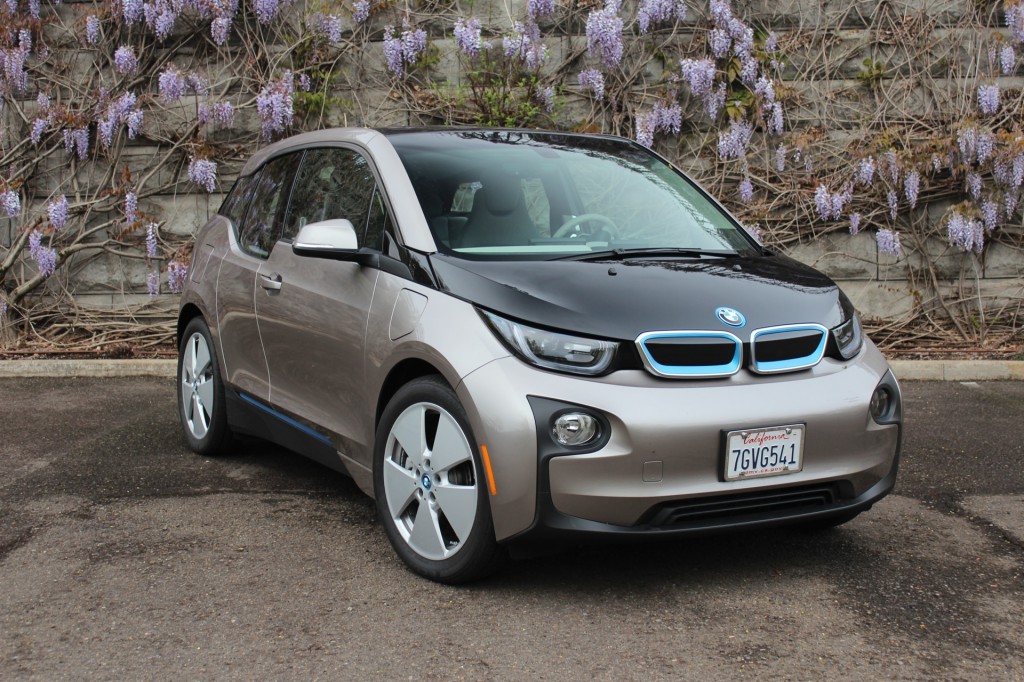When it comes to encouraging electric-car adoption, tax credits and other financial incentives are an important tool.
They can help erase the typical price premium of electric cars over comparable internal-combustion models.
But as greater amounts of money are given to electric-car buyers, there has been considerable debate over whether the majority of people who receive tax credits really need them.
DON'T MISS: California Ends Electric-Car Rebates For Wealthy Buyers, Boosts Them For Poorest (UPDATED)
Critics are concerned that too great a share of tax credits are going to wealthier buyers, who may be able to afford an unsubsidized electric car.
That's an issue that's now been confirmed by a recent study from the Energy Institute at Haas, at the University of California, Berkeley (via Charged TVs).
The study found that the majority of Federal tax credits for electric cars go to higher-income households.

2015 BMW i3 REx - Driven, Portland OR, April 2015
Researchers found that 60 percent of $18 billion in clean-energy tax credits distributed by the Federal government between 2006 and 2012 went to the top income quintile--households making more than $200,000 per year.
Just about 10 percent of the total amount went to households earning less than $75,000 a year.
This amount includes tax credits for several different green technologies, but credits for electric cars were the single incentive that proved to be most concentrated at the upper end of the income spectrum.
ALSO SEE: When Federal Electric-Car Tax Credit Ends, Nissan Will Be Ready, Exec Says
Researchers found that 90 percent of those credits went to the top income quintile.
Two tax credits aimed at green cars--the Alternative Motor Vehicle Credit (AMVC) and the Qualified Plug-In Electric Drive Motor Vehicle Credit (PEDVC)--accounted for $895 million, or about 5 percent of total clean-energy tax credits awarded during the period studied.
The PEDVC--a credit for electric cars and plug-in hybrids in place since 2009--was found to be the more extreme of the two in its uneven distribution among income levels.

2015 Nissan Leaf
The bottom 80 percent of people filing for this credit received little more than 10 percent of the benefits, and the bottom 90 percent of filers received only about 40 percent of credits, researchers said.
In other words, six of every 10 tax-dollar credits went to the top 10 percent of all U.S. households.
Other tax credits studied aimed at encouraging taxpayers to weatherize their homes, and install solar panels.
Bellwether state California, long a trendsetter and policy innovator in emissions issues, recently enacted a household income cap on its clean-vehicle purchase rebate program.
MORE: IRS Electric-Car Tax Credits: Reporting Discrepancies Remain
While the study's authors claim that continued use of tax credits comes at "real cost, both in terms of efficiency and equity," they admit that an alternative may produce its own concerns.
For example, they say a carbon tax would have the opposite effect, with the burden falling disproportionately on higher-income households who consume more, fly more, and so forth.
That may be more appropriate economically, and a better allocation of "externality" costs that are not borne by the maker or user of the product and service.
But the authors note that subsidies are often far more acceptable politically than higher taxes, which bear their own costs--even when they make the most economic sense.
_______________________________________________












